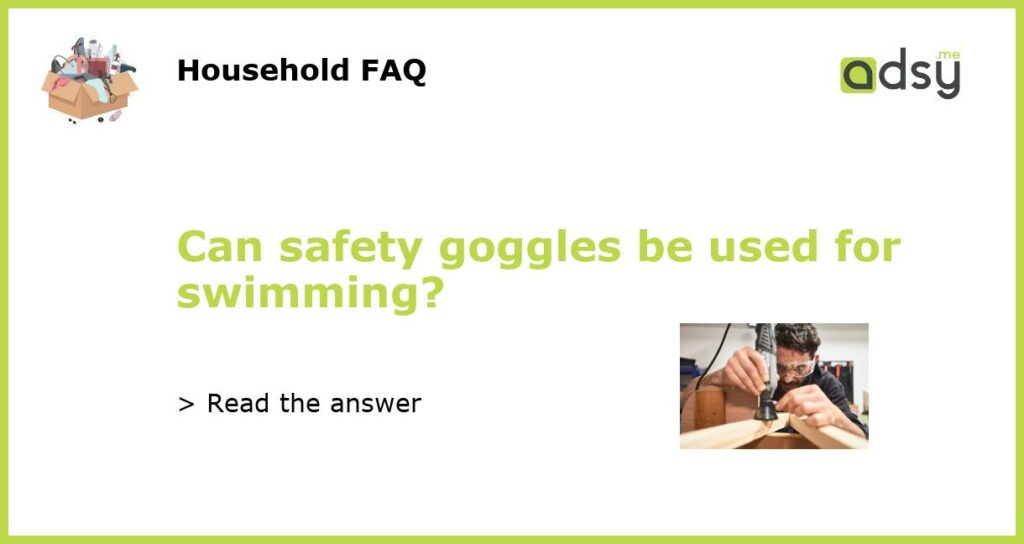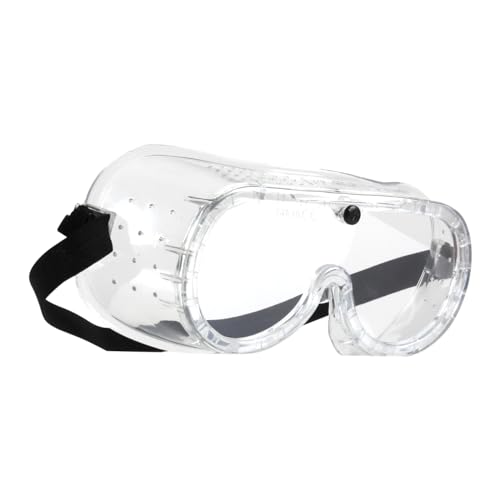Yes, safety goggles can be used for swimming
Safety goggles are designed to provide protection for the eyes against potential hazards, such as particles, chemicals, or bright lights. While their primary purpose is to ensure safety in various industrial or laboratory settings, safety goggles can also be used for swimming.
The importance of eye protection in swimming
Swimming is a popular recreational activity that is enjoyed by people of all ages. However, swimming can also pose risks to the eyes, such as exposure to chemicals in the water, contact with bacteria or viruses, and the potential for eye injuries caused by splashing or accidents. Therefore, it is essential to protect the eyes while swimming to prevent any potential harm.
Advantages of using safety goggles for swimming
Safety goggles offer several advantages when used for swimming:
- Protection against chemicals: Pool water is often treated with chemicals to maintain its cleanliness. These chemicals, such as chlorine, can irritate the eyes and potentially cause long-term damage. Safety goggles provide a barrier between the eyes and the water, reducing the risk of chemical irritation.
- Bacterial and viral defense: Swimming in public pools or other bodies of water can expose the eyes to bacteria or viruses. Safety goggles create a protective shield that prevents direct contact between the eyes and the water, reducing the risk of infections.
- Prevention of accidental eye injuries: Safety goggles are designed to provide impact resistance against various objects and particles. While not specifically designed for swimming, safety goggles can still offer a level of protection against accidental eye injuries caused by splashing water or collisions with other swimmers.
- Clear visibility: Safety goggles often have anti-fog properties that help maintain clear visibility underwater. This can enhance the swimming experience by allowing swimmers to see clearly without the need to constantly wipe or adjust their goggles.
Choosing the right safety goggles for swimming
When using safety goggles for swimming, it is important to choose the right type of goggles for optimal comfort and effectiveness.
- Ensure a proper fit: Safety goggles should fit snugly around the eyes to create a watertight seal. This prevents water from entering the goggles and ensures that they stay securely in place during swimming.
- Anti-fog and UV protection: Look for safety goggles that offer anti-fog properties to maintain clear visibility underwater. Additionally, consider goggles with built-in UV protection to shield the eyes from harmful ultraviolet rays.
- Comfort and ease of adjustment: Opt for goggles that are comfortable to wear for extended periods and have adjustable straps for a customized fit. This will help prevent discomfort or water leakage while swimming.
Limitations of using safety goggles for swimming
While safety goggles can provide benefits for swimming, it is important to acknowledge their limitations:
- Peripheral vision restriction: Safety goggles are typically designed to provide a close-fitting seal around the eyes, potentially limiting peripheral vision. Swimmers should be cautious of their surroundings and be mindful of other swimmers or potential hazards in the swimming area.
- Not designed for diving: Safety goggles are not designed for diving or deep-water activities. The pressure at deeper depths can cause discomfort or leakage in the goggles, compromising their effectiveness.
- Not suitable for competitive swimming: In competitive swimming, goggles specifically designed for the sport are often preferred due to their streamlined shape and reduced drag in the water. Safety goggles may not provide the same level of performance and may hinder performance.
Proper care and maintenance of safety goggles for swimming
To ensure the longevity and effectiveness of safety goggles for swimming, it is important to take proper care of them:
- Rinse with clean water: After each swimming session, rinse the goggles with clean water to remove any pool chemicals or contaminants.
- Avoid harsh chemicals: Avoid using harsh chemicals or abrasive materials to clean the goggles, as they may damage the lenses or the seal.
- Store properly: Store the goggles in a protective case or pouch to prevent scratches or damage to the lenses.
- Replace when necessary: Over time, the lenses or the seal of the goggles may degrade or wear out. It is important to replace the goggles when they no longer provide a proper seal or clear vision.
In conclusion, safety goggles can be used for swimming to provide protection against chemicals, bacteria, and accidental eye injuries. While they may have some limitations, using safety goggles specifically designed for swimming can enhance the overall swimming experience and ensure eye safety. Remember to choose goggles that fit properly, offer necessary features like anti-fog and UV protection, and maintain them properly for optimal performance.






